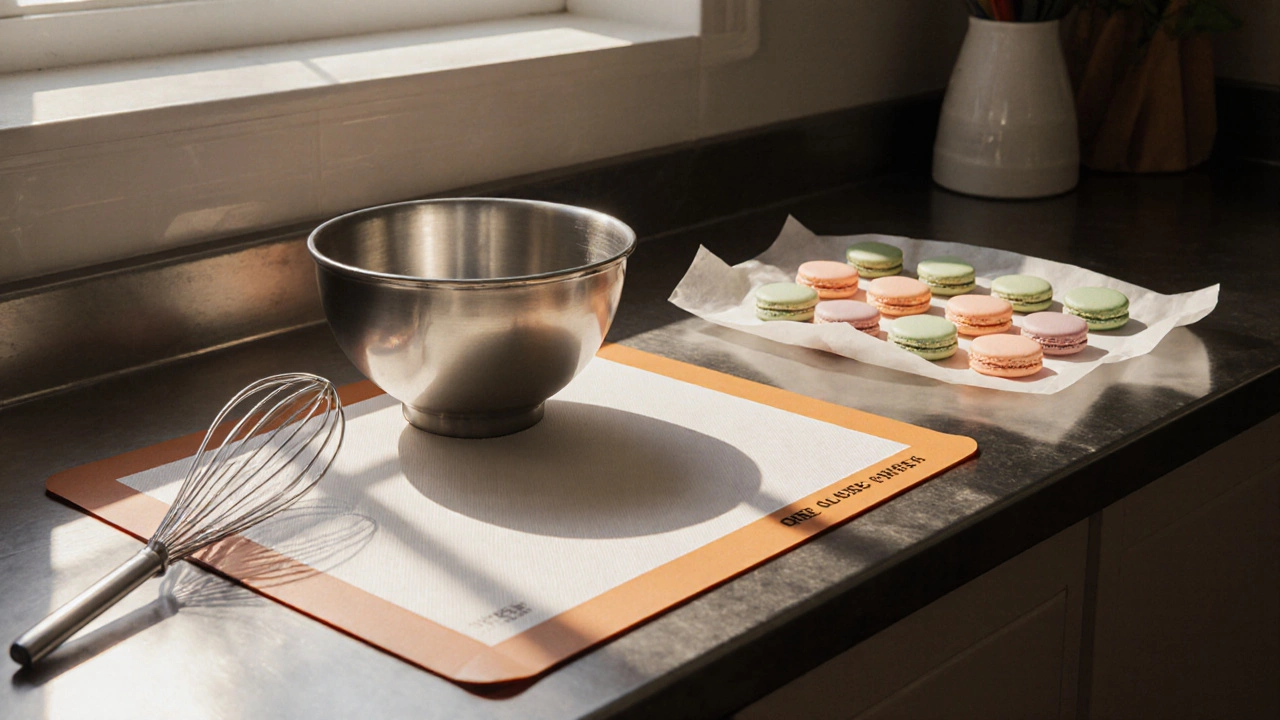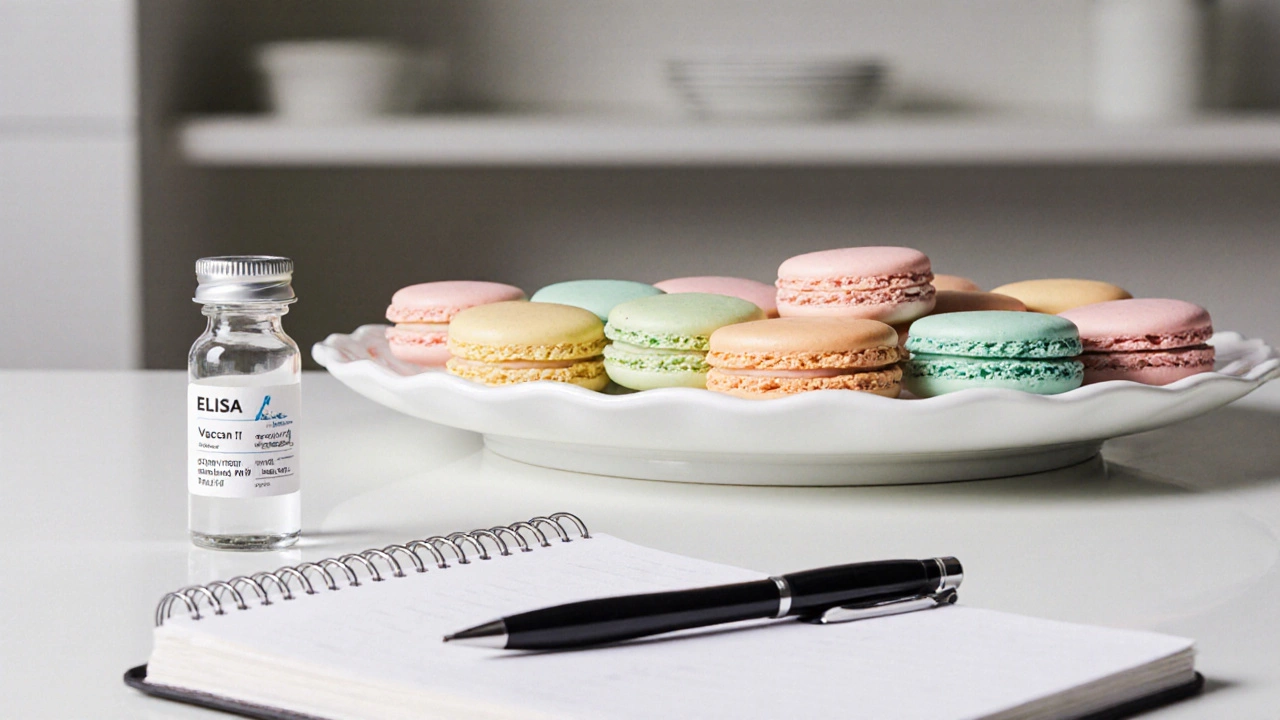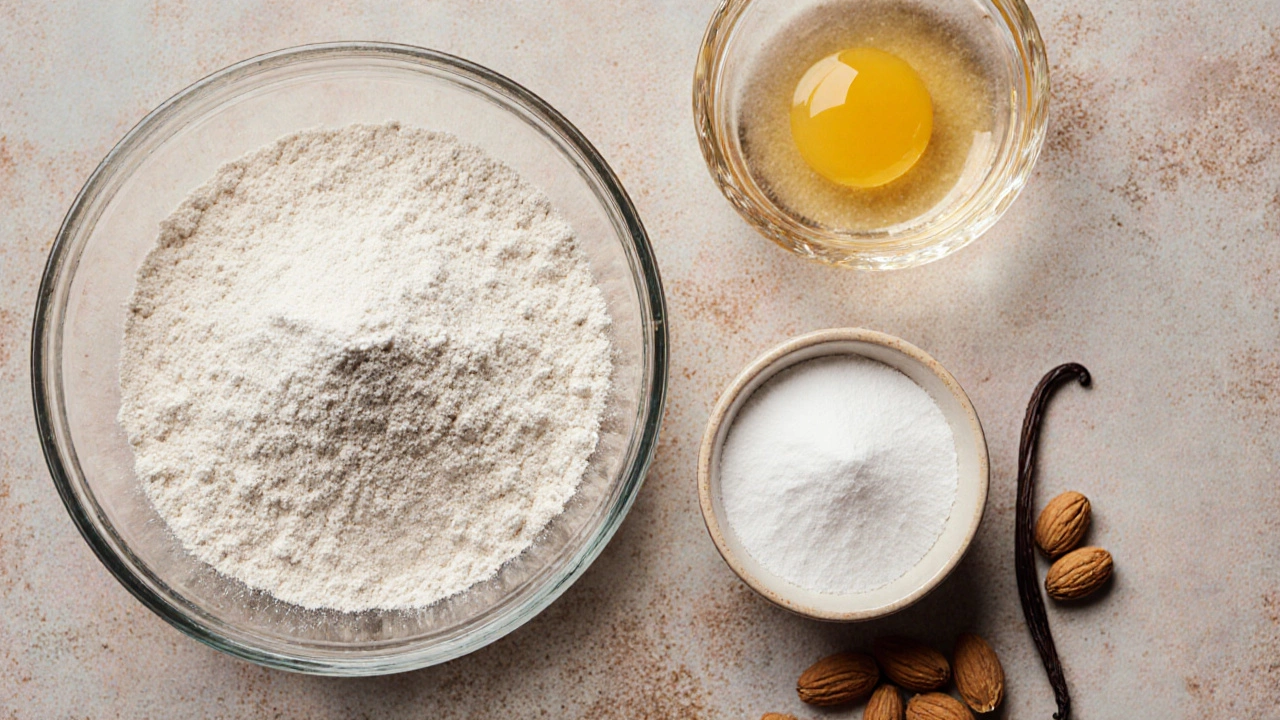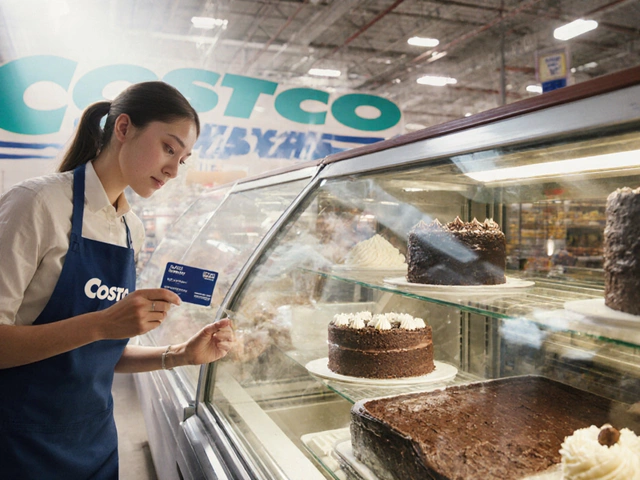Gluten-Free Macaron Safety Calculator
Assess Your Macaron Safety
Answer these questions to determine your risk level for gluten exposure in homemade macarons.
Safety Assessment
Click the button above to see your safety score and recommendations.
When people wonder Macarons are gluten‑free, the answer isn’t a simple yes or no. The classic French cookie is made with almond flour, egg whites, and sugar-none of which contain gluten. But the reality of a safe, macarons gluten free treat depends on how you source ingredients, avoid cross‑contamination, and handle the final bake.
Quick Takeaways
- Traditional macarons use naturally gluten‑free ingredients.
- Cross‑contamination in the kitchen or at the store can make them unsafe for celiacs.
- Look for certified gluten‑free almond flour and powdered sugar.
- Use dedicated gluten‑free tools and bake on parchment to limit contact.
- Testing kits or lab analysis can confirm safety for the most sensitive eaters.
What Exactly Is a Macaron?
A macaron is a delicate sandwich cookie made from a meringue base (egg whites and sugar) mixed with ground nuts-usually almonds. The batter is piped into small circles, baked until a crisp outer shell forms, then filled with ganache, buttercream, or jam. The result is a light, airy bite with a chewy interior.
Because the core flour is ground almonds, the cookie is Gluten‑Free Diet by nature. However, the term “gluten‑free” carries legal weight: a product must contain less than 20 ppm of gluten to be labeled safe for people with celiac disease.
Are Traditional Macarons Gluten‑Free?
The short answer: yes, the original recipe is gluten‑free. Almond flour, egg whites, and granulated or powdered sugar contain zero gluten. But a few hidden pitfalls can turn a safe recipe into a risk:
- Ingredient sourcing: Some brands of almond flour are processed in facilities that also handle wheat. Even trace amounts can push the gluten count above the 20 ppm threshold.
- Flavorings and fillings: Chocolate chips, vanilla extracts, or premade frosting may contain hidden wheat starch.
- Cross‑contamination: Using the same mixing bowl, whisk, or silicone mat that previously held dough with flour can transfer gluten.
- Packaging: Bulk bins in grocery stores often share scoops, so a few stray crumbs can travel between products.
So while a classic French macaron recipe is gluten‑free on paper, the real-world safety depends on how scrupulous you are about the supply chain and kitchen practices.

Key Ingredients That Matter
Below is a side‑by‑side look at the ingredients you’ll find in a standard macaron versus gluten‑free‑certified alternatives. All gluten‑free alternatives are tested to stay under 20 ppm.
| Ingredient | Traditional Version | Certified Gluten‑Free Version |
|---|---|---|
| Almond base | Raw almond flour (often processed in mixed‑facility) | Certified gluten‑free almond flour (e.g., Bob’s Red Mill GF Almond Flour) |
| Powdered sugar | Regular confectioners’ sugar | GF‑labeled powdered sugar (no wheat starch) |
| Egg whites | Fresh egg whites (naturally GF) | Same, but keep them separate from any dairy/regular batches |
| Flavorings | Vanilla extract, cocoa powder, fruit purées (may contain hidden wheat) | Pure vanilla bean paste, 100 % cocoa powder, fresh fruit (check labels) |
| Fillings | Chocolate ganache, buttercream, jam (often include flour‑based thickeners) | GF‑certified ganache, cornstarch‑thickened buttercream, fruit compote |
How to Bake Truly Gluten‑Free Macarons
Follow these steps to keep your macaron batch safely Gluten‑Free:
- Set up a dedicated gluten‑free zone: Use a clean bowl, whisk, and silicone mat that have never touched wheat flour. If you share kitchen space, wipe down countertops with a food‑safe sanitizer.
- Verify each ingredient: Check the packaging for a gluten‑free certification symbol. When buying bulk almond flour, ask the store staff about the processing facility.
- Measure accurately: Macarons are unforgiving. Use a digital scale for all dry ingredients-standard ratio is 100 g almond flour to 100 g powdered sugar.
- Make a perfect meringue: Beat egg whites on medium speed until soft peaks form, then gradually add sugar. The meringue should be glossy and hold stiff peaks.
- Fold, don’t overmix: Gently fold the almond‑sugar blend into the meringue until the batter flows slowly off the spatula (the “ribbon” stage).
- Pipe on parchment: Line your baking sheet with parchment paper or a silicone baking mat. This removes the need for greasing, which can harbor tiny flour particles.
- Rest before baking: Let the piped shells sit for 30‑60 minutes at room temperature. The surface should form a slight skin-this helps develop the classic “foot”.
- Bake low and steady: Preheat the oven to 150 °C (300 °F). Bake for 12‑15 minutes; the shells should lift easily when you slide a spatula underneath.
- Cool and fill: Once cool, sandwich shells with your GF‑approved filling. Store in an airtight container and let the flavors meld for 24 hours before serving.

Cross‑Contamination: The Silent Saboteur
Even with a perfect recipe, cross‑contamination can sneak in through three main routes:
- Shared equipment: Mixing bowls, spatulas, or even a pastry bag that was used for wheat‑based dough can leave a residue.
- Airborne flour particles: Baking multiple batches of different cookies in the same kitchen can cause dust to settle on your clean tools.
- Storage containers: Using a bulk bin scooper that also handles regular flour can transfer gluten.
To stay safe, dedicate a set of tools exclusively for gluten‑free baking, store them in a separate cabinet, and consider a small “gluten‑free only” pantry shelf.
Testing & Certification: When to Go the Extra Mile
If you bake for a commercial bakery or for friends with severe celiac disease, a simple label check might not be enough. Here are options to prove gluten‑free status:
- ELISA test kits: These home kits detect gluten levels down to 5 ppm. Swab a finished macaron and follow the color‑change instructions.
- Third‑party laboratory testing: Send a sample to a certified lab (e.g., NSF International). They’ll provide a detailed report with exact ppm.
- Certification programs: In Canada, the “Gluten-Free Certification Organization” (GFCO) offers a seal. To earn it, your entire production line-from ingredient sourcing to packaging-must pass regular audits.
For home bakers, an ELISA kit is a low‑cost safety net. For businesses, certification builds trust and lets you market your macarons as “Certified Gluten‑Free”.
Frequently Asked Questions
Do store‑bought macarons contain gluten?
Most supermarket macarons are made in facilities that also process wheat flour, so they may not be certified gluten‑free. Always read the label for a GF stamp or contact the manufacturer.
Can I substitute almond flour with other nuts?
Yes. Hazelnut flour or cashew flour work, but they change the flavor and texture. Keep the same weight ratio and ensure the substitute is labeled gluten‑free.
Is powdered sugar always gluten‑free?
Not always. Some brands add a small amount of wheat starch as an anti‑caking agent. Look for a GF label or use a pure sugar without additives.
How long can I store gluten‑free macarons?
In an airtight container at 4 °C (39 °F) they stay fresh for up to 5 days. For longer storage, freeze them on a tray, then bag them; they’ll keep for 2‑3 months.
Are macarons safe for someone with a wheat allergy?
If you use certified gluten‑free ingredients and avoid cross‑contamination, they are safe for wheat‑allergy sufferers. Always double‑check coatings and fillings for hidden wheat.
Bottom line: Traditional macarons start gluten‑free, but the only way to guarantee safety for celiac or highly sensitive eaters is to control every variable-ingredients, tools, and environment. With the right sourcing, a clean workspace, and a little extra testing, you can confidently serve beautiful, melt‑in‑your‑mouth macarons that truly are gluten‑free.





